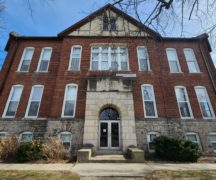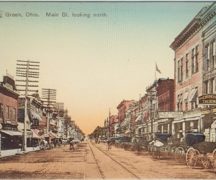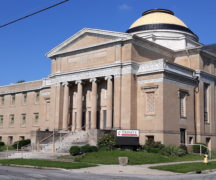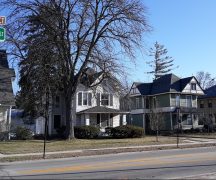By JAN LARSON McLAUGHLIN
BG Independent News
Bowling Green is the only university city in Ohio that doesn’t already have the ability to create an historic preservation plan, according to those trying to remedy that deficiency.
There are 77 cities in the state that have Certified Local Government status. And on Monday, Bowling Green’s Historic Preservation Commission plans to make a pitch to City Council that the community would benefit from helping property owners protect their historic structures.
The effort has been made before – but suspicions and very vocal objections by a few citizens about the motivation for the historic preservation commission killed the effort six years ago.
This time around, the city and the commission members – John Sampen, Les Barber, Wil Roudebush and John Wade – hope to do a better job of educating the public and calming fears.
“It doesn’t require anyone to do anything,” Barber said during a meeting last week. “These are not rules. They are guidelines.”
The historic preservation plan will be “gently worded,” Sampen said.
“I think we’re very sensitive to not being Perrysburg,” he said. “We want to find an ordinance acceptable to our community.”
By creating a plan, grant funding will be available for local historic preservation projects.
“We’re not forcing anybody. We want to give the community something that inspires,” Sampen said.
“There’s a lot of history in Bowling Green, and we have this opportunity to help it,” Roudebush said.
The goal of historic preservation is to protect the historic integrity of buildings – and help when possible with restorations. It is not to nitpick and tell homeowners what they can and cannot do with their properties, commission members have stressed.
To function fully, the city needs to apply to become a Certified Local Government through the Ohio Historic Preservation Office. The CLG status would allow the city to get preservation grants and tax credits to help homeowners and businesses protect historic buildings.
The commission’s goal is to “preserve, promote, encourage and support the maintenance, use and reuse of historic buildings in the city.” In other words, it would help property owners who want to preserve historic structures.
Some historic homes are losing the battle against time and rental transformation. And the longer the preservation efforts are on hold, the more some structures deteriorate, commission members have said.
Mayor Mike Aspacher thanked the commission last week for creating a plan that will work for Bowling Green.
“It’s not so rigid that we are pounding people over the head with it,” Aspacher said. “I do think it will provide help in our community. It’s time that we do this.”
City Council President Mark Hollenbaugh agreed.
“I was disappointed early on when things got put on hold,” he said about the effort in 2013. “I understand the importance of this. It’s a great first step forward.”
The commission members are expecting some opposition for landlords – but they hope it is less than last time.
“We want to avoid any further decline in historic structures,” Barber said. “If you look at what’s happening in these areas, homes come up for sale, they get bought by landlords, and they start disintegrating.”
Barber clarified that not all landlords allow properties to deteriorate.
“But in general, they decline,” he said. “Then that reduces the general appeal that Bowling Green has.”
The commission plans to take its proposal to City Council, then to the city Planning Commission. From there, public meetings will be held to get input, including at least one meeting specifically for downtown business owners.
Then, if the majority of the property owners support the idea, multiple historic overlay zoning districts will be created.





